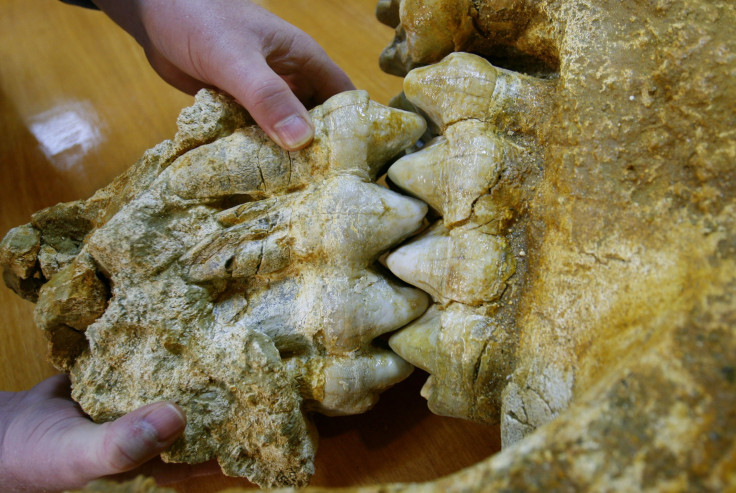10,000-Year-Old Mastodon Tooth Found By Michigan Boy Is ‘Great Reminder’ Of North America’s Prehistoric Past

For a young boy whose dream is to become a paleontologist, what better sign is there of a successful career than finding a 10,000-year-old mastodon tooth in his very own neighborhood? That’s what happened to 9-year-old Philip Stoll from Lansing, Mich.
According to CNN, Stoll, who wants to go study paleontology when he’s older, came across the prehistoric tooth last summer while exploring a nearby creek. The tooth was about 8 inches long, had six peaks and was brown in color.
At first, the 9-year-old wasn’t sure what he had stepped on; he and the rest of the neighborhood just thought it was “pretty cool.” His mother, according to the Times Herald, thought it could be an old car part or an oddly shaped rock.
“I was holding it in my hands for a few minutes and then it gave me the creeps so I put it down on the desk,” Heidi Stoll, Philip Stoll’s mother, told CNN. “It looked like a tooth. It looked like there was something like gum tissue, a little bulgy thing around the top.”
After some Google searching, mother and son contacted herpetologist – a zoologist who studies amphibians and reptiles – at Michigan State University named Jim Harding. They even sent Harding photos of Stoll’s curious find.
Harding identified the fossil as the tooth of a prehistoric mastodon, an extinct elephant-like creature that roamed North America about 10,000 years ago.
Harding told the Times Herald that mastodon fossils are recovered in Michigan about every three to four years. In fact, in 2012, two boys discovered a mastodon vertebra while fishing near Detroit.
“It is a great reminder of what used to roam the country,” he said. “It most likely got stuck in a swampy area and drowned.”
Mastodons resembled woolly mammoths and had thick coats of shaggy hair and long, curving tusks. They lived in herds and dwelled in forests, living off a mixed diet of leaves, soft shoots and grasses.
Compared to mammoths, mastodons had shorter legs and longer bodies and were more heavily muscled.
Paleontologists believe mastodons went extinct as the result of rapid climate change in North America at the end of the Pleistocene period. The last glacial period, also known as the Ice Age, occurred during the final years of the Pleistocene.
Around the same time, humans living in North America had developed more sophisticated stone hunting tools, which may have contributed to the decline of the mastodon population.
© Copyright IBTimes 2024. All rights reserved.












